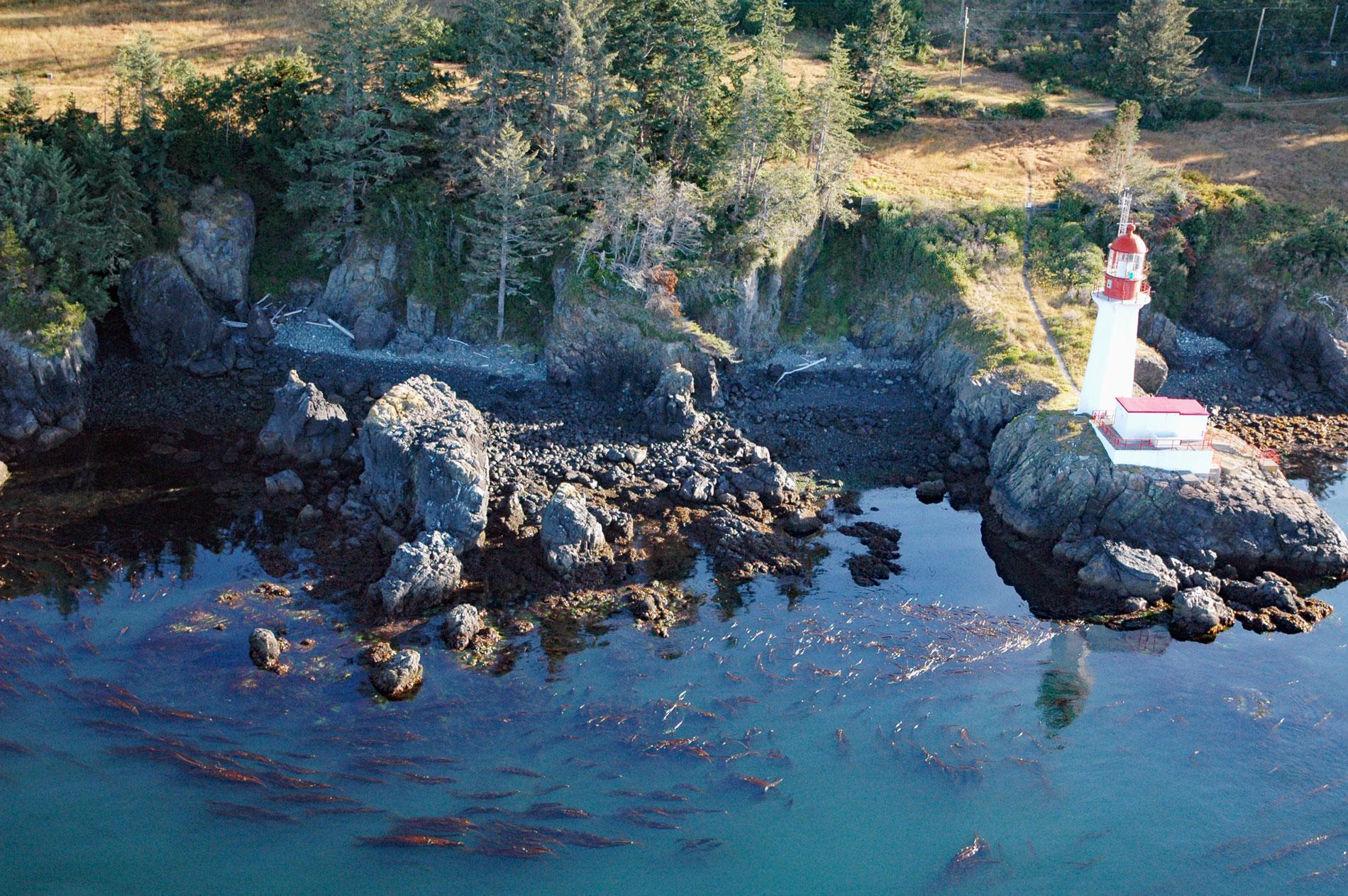Sheringham Point is the site of a historic lighthouse located on the southern shore of Vancouver Island and on the Strait of Juan de Fuca, between Otter Point to the east and Point No Point to the west, about 26 miles (42 km) west-southwest of Victoria and 7 miles (11 km) southeast of Jordon River, British Columbia. The point was originally named Punta de San Eusebio in 1790 by Manuel Quimper who sailed the Princesa Real into the Strait of Juan de Fuca with officers López de Haro and Juan Carrasco. The point was named again in 1846 by Captain Henry Kellett of HMS Herald for Commander William L. Sheringham who was known for various naval surveys while on the Hudson’s Bay Company Beaver. Vancouver Island is the main component of the Insular Belt, a geological region on the northwestern coast of North American, and the island geology mostly represents rocks of the Wrangellia terrane that formed during the Jurassic somewhere near the equator. The terrane migrated and accreted to the North American continent by the Cretaceous period. Erosion-resistant pillow basalt forms Sheringham Point, which is part of the Metchosin Volcanics that underlie most of the southern tip of Vancouver Island and are estimated at about 13,000 feet (4,000 m) thick.
Sheringham Point and the coastal fringe between Sooke Inlet to the east and Jordon River to the west is the traditional territory of the T’sou-ke, or Sooke. They are a Coast Salish people that include several First Nations living along the coast in British Columbia, Puget Sound, and northwestern Oregon. In about 1846, the Sooke were nearly annihilated in a combined attack by the Cowichans, Klallums, and Ditinahts. The survivors contacted Europeans relatively early by association with the Hudson’s Bay Company and are a signatory to the Douglas Treaties. In 1849, the London office of the Hudson’s Bay Company outlined the general principles which authorized James Douglas in Victoria to negotiate treaties with the Coast Salish tribes of southern Vancouver Island. Douglas never referred to these agreements as treaties but used such terms as ‘purchases’ or ‘deeds of conveyance’. In the spring of 1850, he concluded nine agreements covering Victoria, Metchosin, and Sooke, two more in 1851 at Fort Rupert, two covering the Saanich Peninsula in 1852, and one at Nanaimo in 1854. The T’sou-ke Nation was left with two reserves around the Sooke Basin with a total area of 165 acres (67 ha).
On the night of February 26, 1862, the sailing ship Anna Barnard, bound from San Francisco to Sooke was approaching Vancouver Island in the dark of winter night. Captain Olmstead could hear the pounding surf, but thick fog prevented the crew from seeing the shore and the ship struck rocks near Cape Flattery. Two crewmen died but the captain and 7 remaining men were rescued by the Makah and transported first to Nitinaht and then to Victoria by canoes. In 1891, a lighthouse was built at Carmanah Point to mark the entrance to the Strait of Juan de Fuca. In 1906, SS Valencia was bound from San Francisco to Seattle but missed the entrance to the Strait of Juan de Fuca and shortly before midnight on 22 January struck a reef near Pachena Point. The official death toll was 136 persons and only 37 men survived. Although the Carmanah Point Lighthouse marked the northern entrance to the Strait of Juan de Fuca, there were still many nautical miles of unnerving darkness before a ship entering the strait from the north would see the light at Race Rocks. This dark void disappeared in 1912 with the establishment of the Sheringham Point Lighthouse. In 2010, after almost 100 years of service, the Canadian Department of Fisheries and Oceans declared the light station and surrounding lands surplus. Today, the Sheringham Point Lighthouse Preservation Society and the Capital Regional District are working together to restore the station and create a public park. Read more here and here. Explore more of Sheringham Point and the Strait of Juan de Fuca here:

